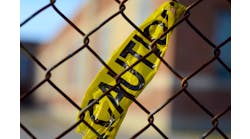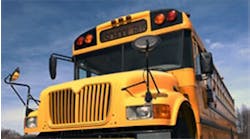Schools may be viewed as a safe haven from the outside world, but this is not the case when a tornado strikes. Just last month, a twister struck the University of Maryland in College Park, killing two sisters and leaving $15 million in damage.
School administrators might think that these storms happen so rarely that they are not a serious threat and that school facilities provide adequate protection. But the reality is that students, teachers, administrators and staff may not be as safe as they think.
After schools in Kansas and Oklahoma sustained extensive damage from tornadoes in 1999, the Federal Emergency Management Agency (FEMA) published new, more stringent guidelines (FEMA 361) for tornado shelters in public buildings. Under the new guidelines, existing storm shelter areas may not provide the desired level of safety.
Where is it safe?
In primary and secondary schools, tornado drills typically teach students to go to a makeshift storm shelter, interior corridors, storage rooms, restrooms or other interior rooms. The students are told to sit on the floor and place their heads between their knees.
But are these designated areas really safe? At one elementary school, the designated storm shelter area was stronger than a typical non-reinforced concrete block wall corridor. The roof structure consisted of steel bar joists and metal roof deck; the masonry walls received additional support from a light steel frame — and the corridor was still destroyed by the storm. One wall collapsed, and the other was severely damaged. The roof was gone, and debris was everywhere, most notably in the center of the corridor where children typically would have been sent during a storm.
Tornadoes cause many kinds of stress on buildings and produce differing hazards. Strong winds can collapse walls. The same winds passing over horizontal surfaces can remove roofs and other building components, move heavy equipment, and tumble and roll parked vehicles. Changing wind pressures can exert forces to suck a door into a building or pull it open. Building materials can become airborne debris (missiles). Propelled at high speeds, the debris can penetrate doors, windows and even non-reinforced block walls. Flying glass also can be a problem.
Commonly used shelter areas
School corridors typically have construction features that make them unacceptable as storm shelters. The walls usually are not constructed to resist winds from a tornado because stud walls or non-reinforced masonry units are used. The roof structure over the corridor can be lightweight and may be prone to collapse in a severe wind. The roof also may extend to other areas of the building, such as a classroom. If the roof collapses over the adjacent space, it is likely to peel back over the corridor, exposing it and making it unsafe.
Corridors usually have many doors that lead into spaces that are not capable of withstanding wind forces and missile impacts. Clerestory windows, common in hallways, increase the potential for injury from flying missiles and weaken the walls. In addition, a corridor may have exterior doors at each end that can induce a wind-tunnel effect in the corridor if the exterior doors are breached by wind or missiles.
The walls and roofs of storage rooms may have the same structural problems as corridors. Because of unprotected door and window openings and lack of space, a typical storage room is inadequate for shelter. In addition, materials may already fill the room, and moving the materials would waste valuable time when individuals are trying to find shelter from a storm.
Restrooms also may have walls and roofs not designed to withstand a tornado's winds. Doors and windows probably are unprotected; many new schools do not even have doors at restroom entrances. The plumbing fixtures and toilet partitions effectively reduce the space available for shelter.
Shower and locker rooms, with minor modifications, can function in some cases as storm shelters. It will depend on the structure of the walls and the roof, the type of doors, whether or not windows are present, and many other factors.
Basements generally are considered safer than spaces on the ground or upper levels. However, even a basement area may not be safe enough. Whether a basement can provide adequate shelter depends on the construction of the floor above and whether that floor will stay attached to the foundation during a storm.
Is the structure strong enough to prevent collapse when building debris is piled on it? If the floor above blows off during a storm, the occupants of the basement may be exposed to strong winds and flying debris. If the floor collapses into the basement, they may be crushed or trapped by the debris. Basement shelters also need to have an effective way for people with disabilities to get from the ground level to the basement.
Who pays?
FEMA provides a limited amount of remedial funding. However, this is available only after storm damage has made an area eligible. Wichita (Kan.) Public Schools received this funding to provide shelters at three buildings. The funding covers only part of the project expense and applies only to the part that meets FEMA standards.
The most likely funding sources for school districts will be their own capital outlay budgets or new construction dollars. For the most part, state budgets have not addressed this area.
FEMA also offers schools a way to analyze costs and benefits. It can look at potential modifications and determine which ones provide the needed protection at an affordable cost. Some factors to consider:
-
Remodel vs. addition
Several factors work against upgrading existing spaces to meet FEMA guidelines. There may be too many deficiencies, and some of those deficiencies may be difficult to correct. In many cases the obstacles will make remodeling too expensive.
Affordable and practical steps can increase the safety of existing buildings. Although they may not bring an existing shelter completely into compliance, they can increase the odds of survivability. Each school building will need to be assessed individually. FEMA assessment forms and cost/benefit analyses will help determine whether remedial steps are feasible.
Perhaps the best way to provide a tornado shelter at an existing school building is to add on to the building.
-
Single-use shelters vs. multiuse areas
A single-use shelter is an area used solely as a tornado shelter. It does not contribute to the day-to-day educational function. A multiuse shelter is an area of the school integral to the school's educational process and also has been designed as a tornado shelter.
A single-use shelter may appear to be the most economical. The cost should be less than that of a typical educational space — the finish level and type of mechanical system will not be as extensive. On the other hand, building a single-use shelter means fewer dollars available for educational space.
When money is tight
What if a school doesn't have enough money to permit expensive construction projects? Even when money is not plentiful, schools should consider these improvements:
-
Use the site assessment checklist included in FEMA 361 to discover the safest areas of buildings and to identify the deficiencies in shelter areas.
-
Modifications can be made during scheduled improvements (such as roof replacements) for minimal cost. The changes may not reach the safety goals set in the guidelines, but they may significantly strengthen a building area.
-
Plan for the future. When a district has no practical way to have its shelters meet FEMA guidelines, administrators should plan for future modifications. At some point, it may be possible to add building space that includes an engineered shelter that does accomplish the desired level of protection.
Notable
-
F0 to F5
Tornado classifications, ranging from light damage (F0) to incredible damage (F5). -
4
Number of wind zones across the United States — Zone 1 (130 mph); Zone II (160 mph); Zone III (200 mph); Zone IV (250 mph) -
3
Number of school tornado drills per year required in some states. -
250 MPH
Experts estimate this to be the highest ground-level wind speed (three-second gust) for a tornado.
Sidebar: Tornado basics
Tornadoes are complex and violent storms with rapidly rotating winds that form a funnel cloud, or vortex. The part of the country most commonly subjected to tornadoes is a large area of the central United States often referred to as “Tornado Alley.”
Tornado intensity, measured on the Fujita Scale, is classified by the severity of damage, ranging from an F0 (light damage) to an F5 (incredible damage).
An F5-category tornado struck Jarrell, Texas, in 1997 and caused severe damage. The estimated wind speed was 160 mph, far less than seen in other tornadoes. But because the tornado moved as slowly as 4 to 5 miles an hour, the storm caused severe damage.
Damage from tornadoes falls into three main categories: damage from the force of the wind itself: damage induced by changes in atmospheric pressure; and damage caused by airborne debris (missiles).
How a tornado interacts with the environment affects its classification. For example, a tornado striking well-constructed buildings may be an F2, while the same tornado striking poorly constructed buildings may be an F4 because of the damage it causes.
Sidebar: FEMA 361 in depth
The new FEMA guidelines (FEMA 361) offer an objective baseline for building tornado and hurricane shelters. The shelter area is considered to be the entire system, including walls, roofs, openings and area arrangement. The goal of these guidelines is to provide “near-absolute” protection from death or serious injury.
-
Missile and debris damage
The standard missile tested was a 15-pound, 2-foot by 4-foot piece of wood (about 12 feet long) traveling at 100 miles an hour horizontally and 67 miles an hour vertically. This is considered the representative missile for a tornado with wind speeds up to 250 miles an hour. In testing, this missile was propelled into typical building material at a 90-degree impact. Testing indicated that glass windows in any configuration (even laminated or “bulletproof” glass) were not acceptable for tornado shelters.
-
Survivability
The FEMA guidelines also consider human survivability. In the case of a tornado, a shelter will be used for a short amount of time, typically for the event only. Items such as ventilation are considered necessary for short-term survivability. In the case of hurricanes, people may in the shelter for days after the event, and a larger number of issues must be considered.
-
Site-assessment checklist
FEMA 361 includes a site-assessment checklist. It is a good tool for evaluating existing shelter areas or for selecting new ones. It can help identify structural and other vulnerabilities, and it can be used to identify which buildings need retrofitting or remedial solutions more urgently.

